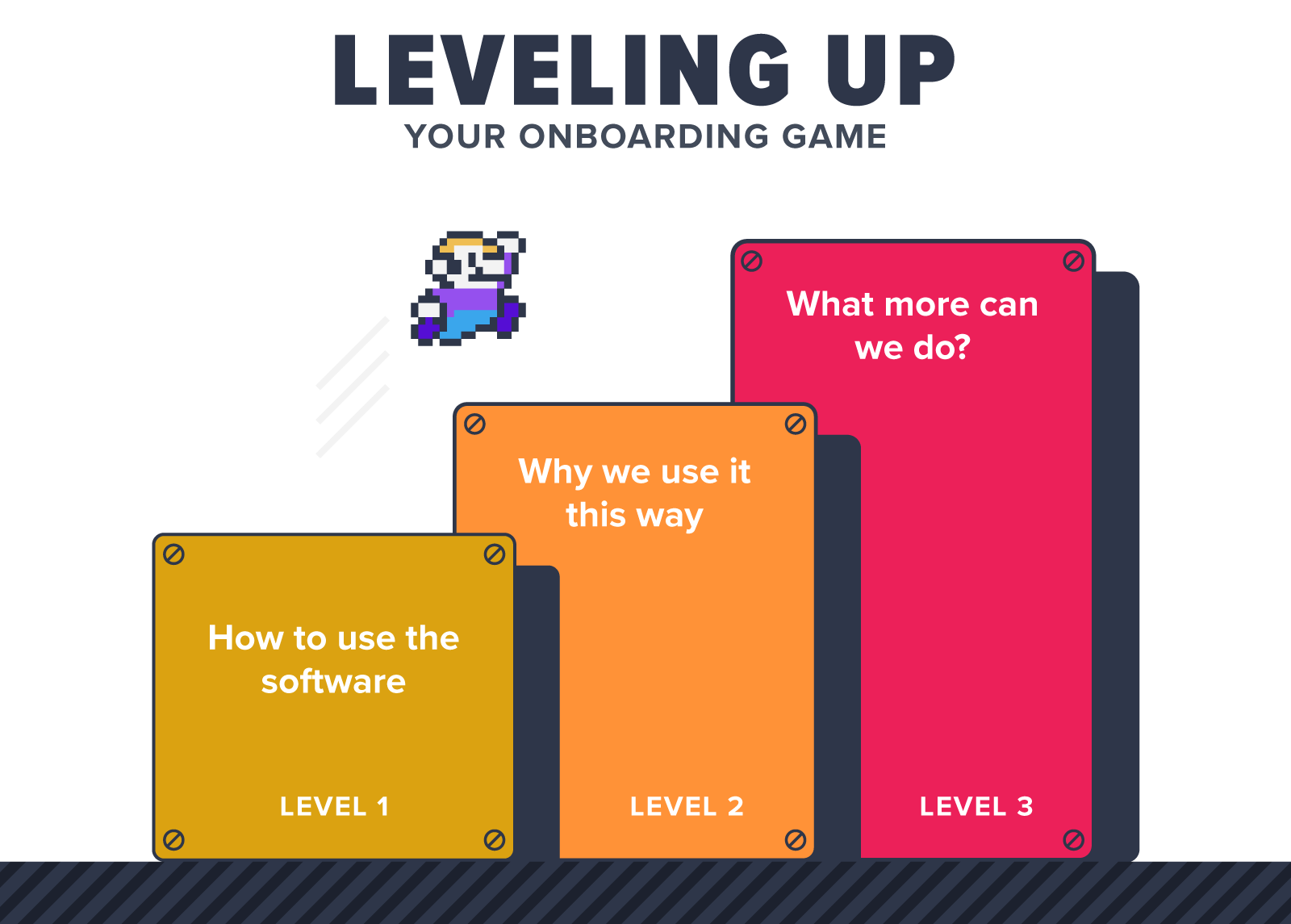In the world of software, companies invest countless resources to ensure that their customers– and those customers’ employees–are able to quickly learn how to use their tool. They build onboarding flows, attach an onboarding specialist, and create extensive documentation. But too often, that is where the buck stops.
Onboarding, though, is not a one-and-done action. In fact, product managers and software designers should think of onboarding as an entire cycle (often even requiring a period of “re-onboarding”). Depending on end users’ different stages of maturity and relationship to your tool, you may have to reimagine what onboarding means and exactly how it’s delivered. In other words, think about how you can level up your onboarding and cater to the different types of users who will be introduced to your product.

Since your users’ process of “mastering” a product is ongoing and continuous, you’ll want to distinguish between these three key phases for onboarding:
-
- New software users at a new account
- New employees at an existing account
- Existing employees at an existing account
To maximize adoption and value for your users, it’s crucial to keep this continuum in mind. Here’s how to build for each phase of onboarding:
Level 1: Users at a new customer account
The initial step in the product adoption process begins when a new customer purchases your software to solve a certain problem or reach a particular business outcome. Your first priority for every new account should be to help their employees learn your product quickly and begin taking the appropriate actions to return value on the investment.
Throughout this phase, the goal of your onboarding program is to teach these new users what the product does and how: Where are the key features and what do they do? It’s easy, particularly for product designers, to believe this is the only necessary step in onboarding users. If we show them how to use the buttons, they’ll figure it out, right? Maybe.
The truth is that you want to cultivate a sense of how users can leverage your software for their own use cases. So, during this phase of onboarding, focus on showing your new customers which features are best for them based on details you already know, for example their role at their company or any information provided during the sales cycle.
Level 2: New employees at an existing customer account
When designing software–and onboarding experiences in particular–it’s important to think beyond the cohort who starts using the product when their company first adds it to their stack. Customers will continually onboard new employees, adding more users to your base. When they do, the needs are slightly different than for a net-new account. Even if your product is commonly used around a customer’s business, you still need to prove its value to new employees who are learning the ropes.
In this stage of onboarding, your customer is looking for the best way to teach their new employees why it is that they use the software, and how to use it in a way so that they quickly see value and continue using it, just like the rest of the organization. This is where personalization based on a user’s role can be particularly useful, since you’ll have an idea of which areas and workflows in your product are most valuable to certain job functions.
Level 3: Existing employees at an existing account
In the ultimate evolution of onboarding, you’d be able to reveal to your customer how the product can continue to add value to their organization beyond the baseline functionality they’ve enjoyed and seen value from. Or, put more simply, to make customers consider: What else can we do with this software that we haven’t already thought of?
This imperative begs the designer to determine the best way to demonstrate new value. And while this could of course be through new features introduced in the product, it’s important to determine whether customers are realizing all of your tool’s current functionality. If not, how can you effectively teach them within the product itself, in an effort to achieve even more value than they are already realizing.
These various stages of onboarding can typically be supported through aforementioned documentation and service teams who are positioned to ensure the customer’s success. However, as designers and product managers consider new ways to guarantee value-delivery for customers, attacking these adoption mechanisms via a product-led in-app onboarding motion could quickly help increase retention and expansion rates.


